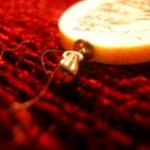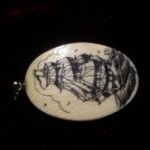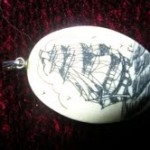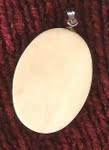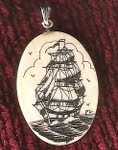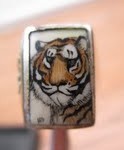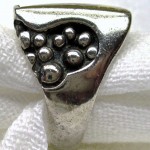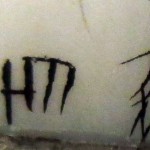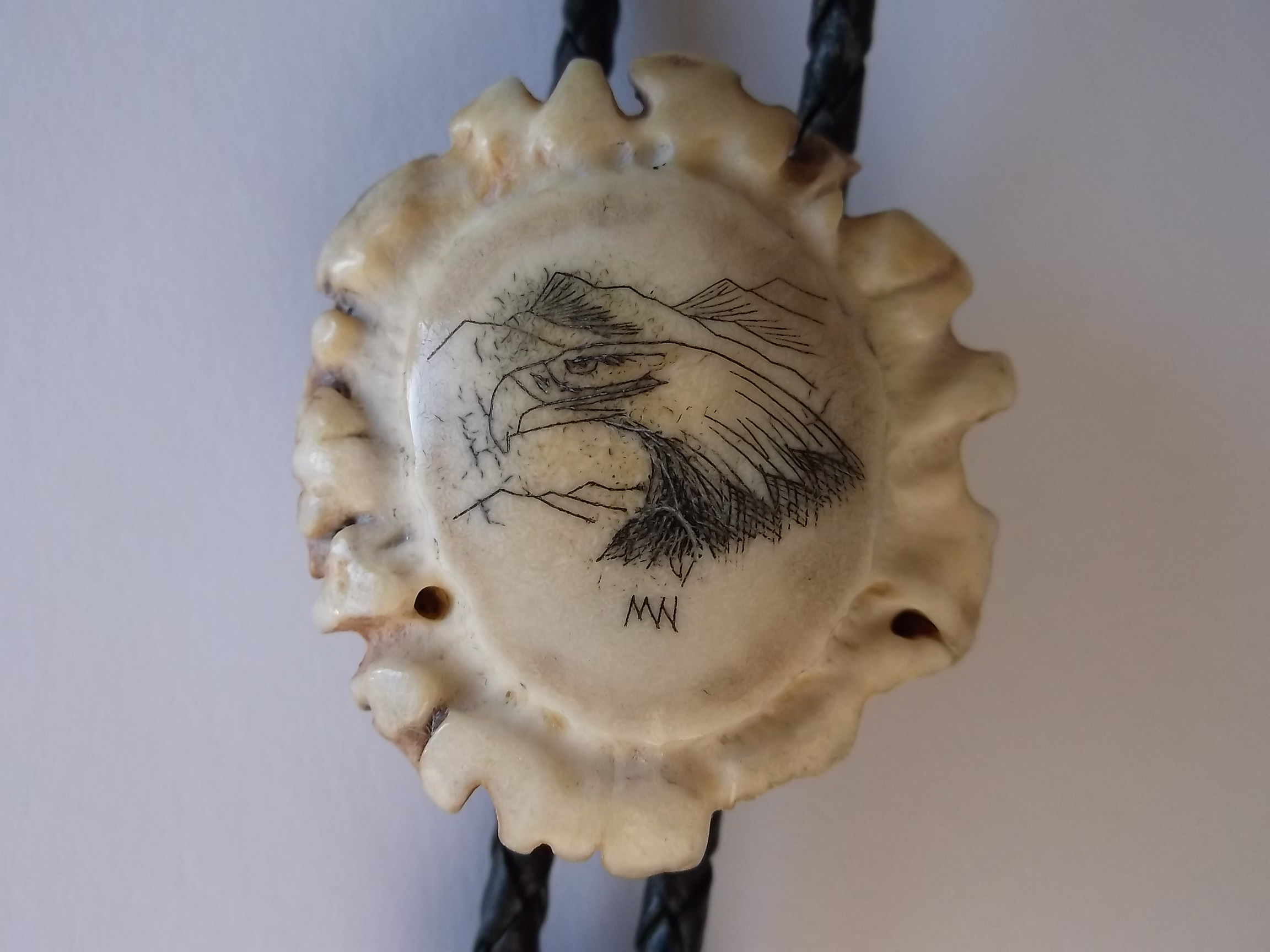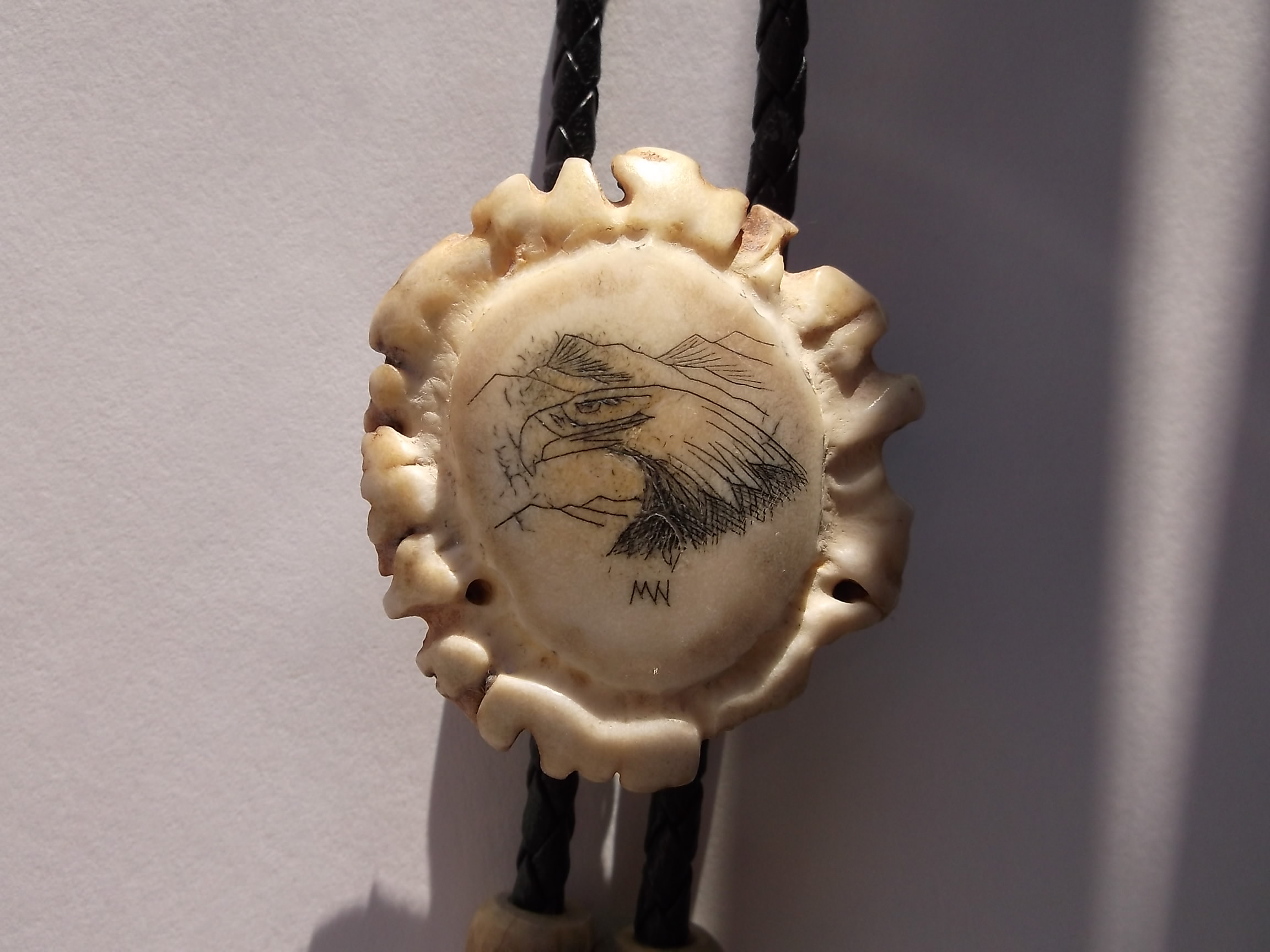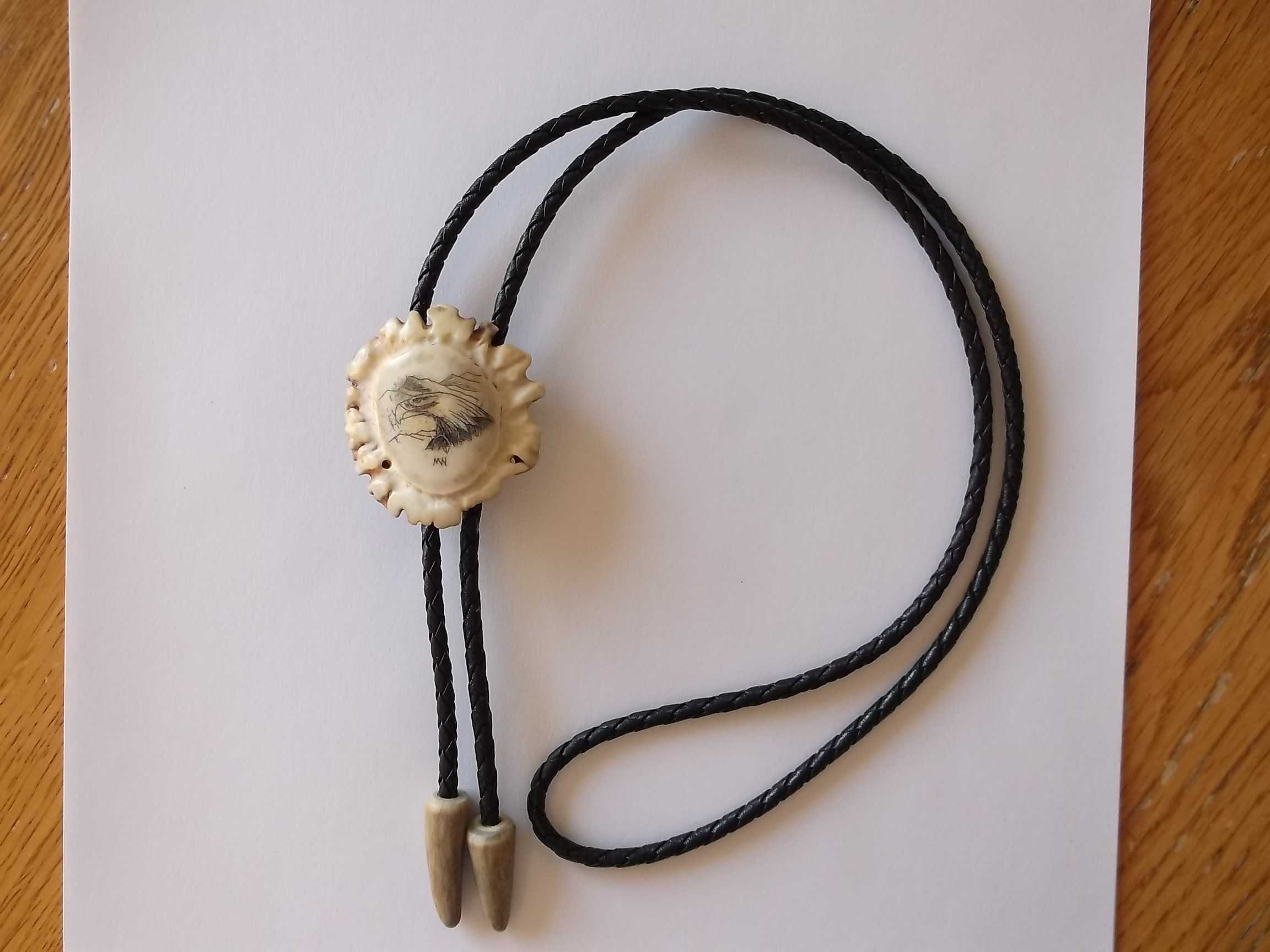Despite the ban of the sale of ivory in California, scrimshaw artists do have alternative materials on which to create their art. Ranging from eco-friendly to man-made, there are materials that can be utilized, but buyer and seller beware, and familiarize yourselves with local laws and ordinances. (see http://codes.lp.findlaw.com/cacode/PEN/3/1/15/2/s653o).
Natural Materials
Bone and antler from non-endangered species. This includes cow bone, shed antler, bone and horn from various domesticated animals. One of our favorite sources is Boone Trading Company (http://boonetrading.com), who also offers a lot of pre-embargo ivory, hippo and warthog ivory and mammoth ivory.
An interesting material that can be scrimshawed on as well as carved is ostrich egg and emu egg – see video below:
Other natural materials that come close to ivory include tagua nut which can be found as slices as well as whole nuts
, and an interesting palm nut called an Ivory nut from the Solomon Islands which is difficult to find and expensive.
Shells of different types also lend themselves to scrimshaw such as pearl laminate and other seashells. Since the dust from these materials are an extreme irritant, using a HEPA type dust mask is essential. This is true for the other materials as well, since bone dust and wood dust are also lung irritants.
Man Made Materials
Man-made materials are mostly plastics and mixtures. These include acrylic, melamine (often used for cutting boards, plastic plates and bowls – hard to find as sheets of sufficient thickness, do not confuse this with the melamine laminate you find in the big box stores), nylon (such as switchplate covers), paper micarta (linen and canvas micarta are often used for knife handles, but these are too rough to work with as scrimshaw), PVC, “fimo
“,”Premo
” “Sculpey
“. and cellulose nitrate – though this is considered a hazardous material. The problem with cellulose nitrate is that it is explosively flammable. Used as an alternative to ivory for billiard balls back in the 1800’s, a poorly held cigar or too hard a hit would make the billiard balls explode with a report similar to a gunshot. People would hit the deck, draw their guns and sometimes overreact: “… An owner of a billiard saloon in Colorado wrote to Hyatt about the explosive tendencies, saying that he did not mind very much personally but for the fact that every man in his saloon immediately pulled a gun at the sound. …“(1) While it can still be found today, it’s flammability and the shipping restrictions makes it less than desirable.
